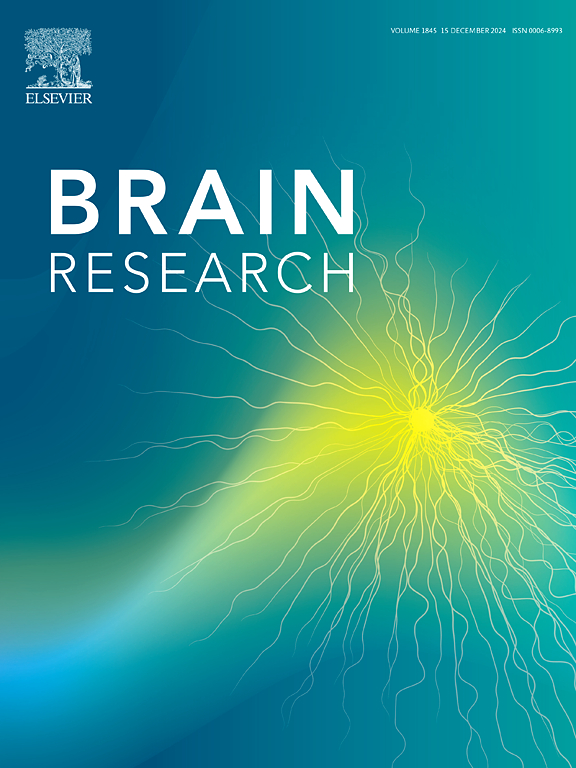线粒体酸5是一种ATP生成加速剂,可防止缺血性中风的神经损伤
IF 2.7
4区 医学
Q3 NEUROSCIENCES
引用次数: 0
摘要
脑梗死是一种严重的疾病,由于不可逆的神经元细胞死亡,导致运动功能障碍和定向障碍。缺血性中风后,缺氧和营养物质的缺乏会引起大脑神经元损伤和线粒体功能障碍。因此,激活线粒体功能是治疗缺血性卒中的一种很有前景的策略。线粒体酸5 (MA-5)是一种靶向线粒体刺激ATP合成的化合物,本研究旨在探讨其是否对脑缺血再灌注(I/R)损伤具有保护作用。我们首先证实MA-5在暴露于神经元样细胞1小时后显著增加ATP的产生。MA-5在诱导OGD/R后也增加了SH-SY5Y细胞的ATP产生和呼吸耦合。通过短暂性中脑闭塞(t-MCAO)诱导小鼠脑I/R后,MA-5可减少神经功能缺损和梗死体积。此外,MA-5抑制了t-MCAO后线粒体介导的细胞凋亡指标Bax/Bcl-2比值的升高。综上所述,这些结果表明MA-5可能是一种有效的治疗缺血性卒中的药物,通过激活线粒体功能。本文章由计算机程序翻译,如有差异,请以英文原文为准。
Mitochonic acid 5, an ATP production accelerator, protects against neurological damage in ischemic stroke
Cerebral infarction is a severe condition that causes motor dysfunction and disorientation due to irreversible neuronal cell death. After an ischemic stroke, the lack of oxygen and nutrients induces cerebral neuronal damage along with mitochondrial dysfunction. Therefore, activating mitochondrial function is a promising strategy for treating ischemic stroke. This study aimed to examine whether Mitochonic acid 5 (MA-5), a compound that targets mitochondria to stimulate ATP synthesis, has protective effects against cerebral ischemia/reperfusion (I/R) injury. We first confirmed that MA-5 significantly increases ATP production after 1 h of exposure to neuron-like cells. MA-5 also increased ATP production coupled respiration in SH-SY5Y cells after the induction of OGD/R. After inducing cerebral I/R in mice via transient midbrain occlusion (t-MCAO), the administration of MA-5 reduced neurological deficits and infarct volume. In addition, MA-5 suppressed the increase in the Bax/Bcl-2 ratio, an index of mitochondria-mediated apoptosis after t-MCAO. Taken together, these results suggest that MA-5 may be a useful therapeutic agent against ischemic stroke by activating mitochondrial function.
求助全文
通过发布文献求助,成功后即可免费获取论文全文。
去求助
来源期刊

Brain Research
医学-神经科学
CiteScore
5.90
自引率
3.40%
发文量
268
审稿时长
47 days
期刊介绍:
An international multidisciplinary journal devoted to fundamental research in the brain sciences.
Brain Research publishes papers reporting interdisciplinary investigations of nervous system structure and function that are of general interest to the international community of neuroscientists. As is evident from the journals name, its scope is broad, ranging from cellular and molecular studies through systems neuroscience, cognition and disease. Invited reviews are also published; suggestions for and inquiries about potential reviews are welcomed.
With the appearance of the final issue of the 2011 subscription, Vol. 67/1-2 (24 June 2011), Brain Research Reviews has ceased publication as a distinct journal separate from Brain Research. Review articles accepted for Brain Research are now published in that journal.
 求助内容:
求助内容: 应助结果提醒方式:
应助结果提醒方式:


